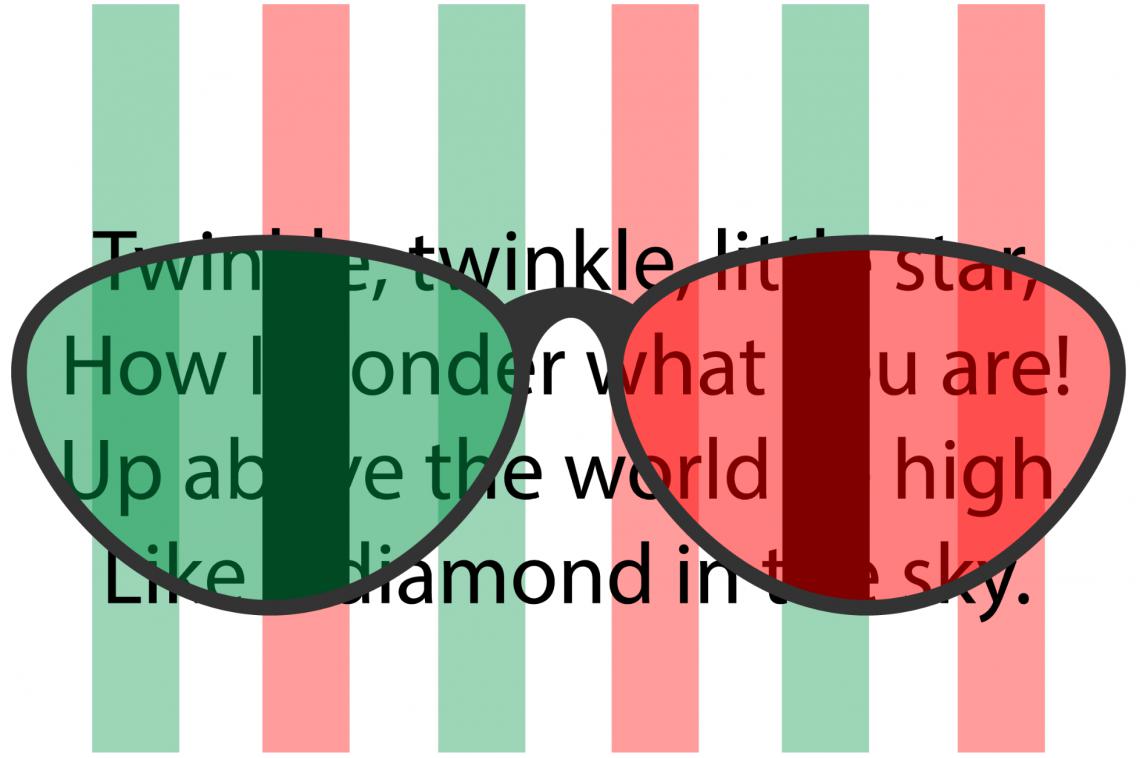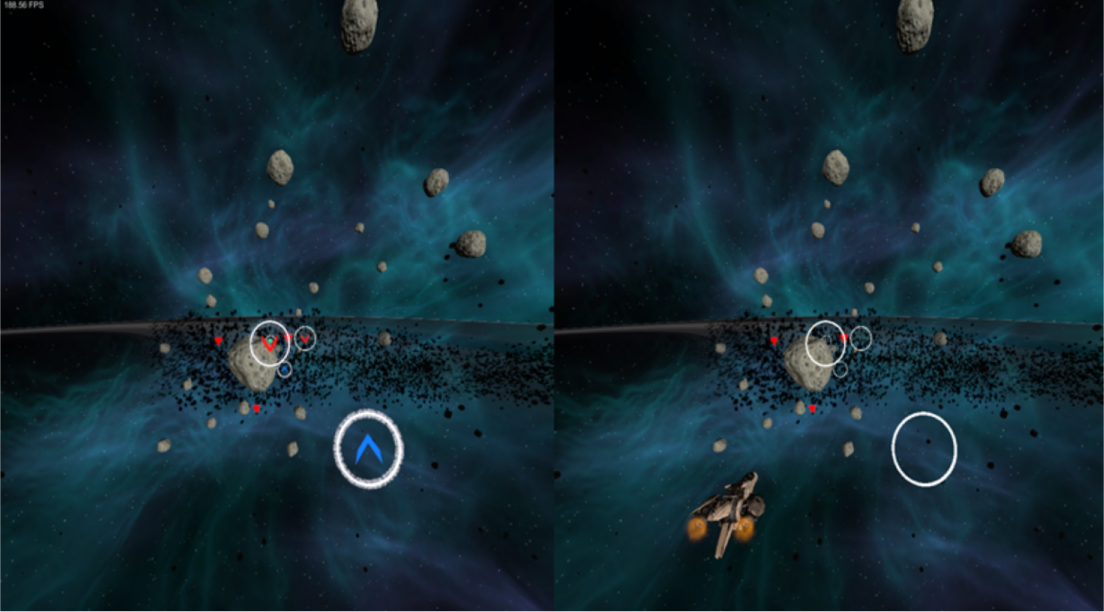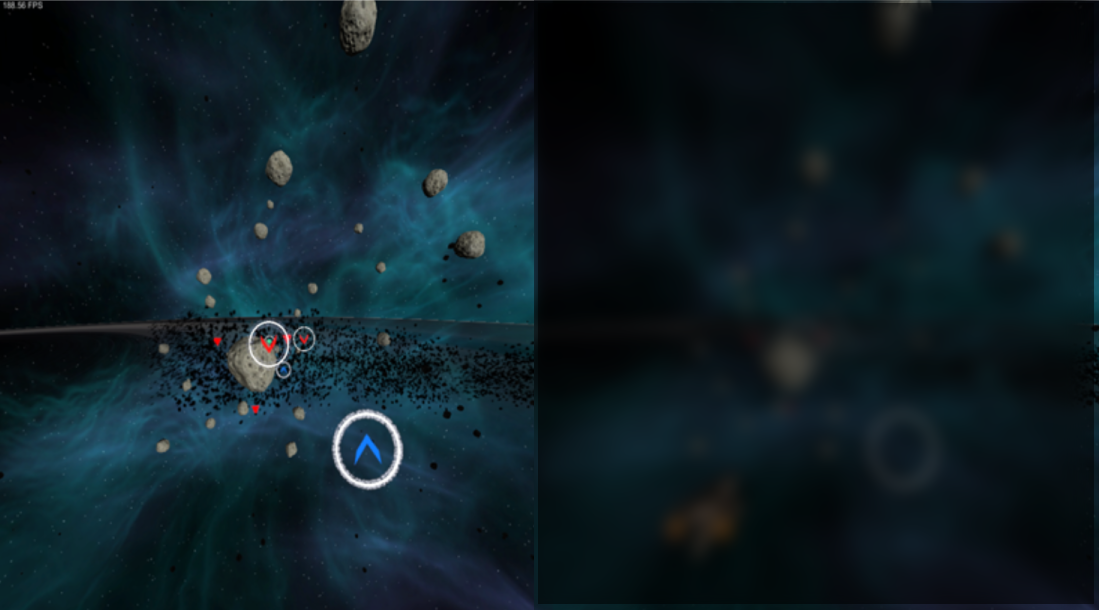What is Dichoptic Training?
The word "dichoptic" comes from the Greek dicha (two) and optikos (sight). Dichoptic is often referred to in the sense of dichoptic visual training or dichoptic training and is used in the treatment of the binocular vision disorder amblyopia (lazy eye). In a dichoptic training activity, the stimuli presented to the right eye is different than the stimulus presented to the left eye.
Dichoptic Training and Amblyopia
Amblyopia is classically treated with penalization therapy—this includes patching the dominant (non-amblyopic) eye or apply a strong dilation drop (such as atropine) to the dominant eye. The key difference in treatment philosophy is that penalization therapies function by forcing the patient to "work the weak eye" while doing little to help the patient work to improve binocularity.
Binocular Treatment
A newer paradigm on amblyopia treatment focuses on helping the patient learn to use both eyes together. This type of treatment is broadly referred to as binocular treatment and would be a major component in vision therapy programs.
Those familiar with amblyopia training may think of red/green activities where the patient wears a pair of glasses where a red lens is placed over the right eye and a green lens over the left. The patient is then shown a set of images or perhaps a block of text with a see-through red/green film placed over it while wearing the glasses. The end result is the right eye (viewing through the red lens) is unable to see items covered by the green film and the left eye (viewing through the green lens) is unable to see items covered by the red film. Together, a normal patient would be able to combine the images of the right and left eye to overcome the blocked out letters.

An example of what the right and left eye would see during a red/green activity. The red/green lines form the "monocular fixation" components and the clear bars form the "binocular field" components.
This type of activity can be repeated with a red/blue set of lenses or a polarized set of lenses and is commonplace in a modern vision therapy treatment room. Activities such as those described are often referred to as MFBF—"monocular fixation in a binocular field". The eyes have images that are MONOCULAR FIXATION targets yet must work together to see the non-obstructed BINOCULAR FIELD.
You can find a vision therapy specialist near you!
Rebalancing the Visual System with Dichoptic Treatment
Binocular therapy, however, is only part of the dichoptic treatment equation. In addition to the MFBF concept, dichoptic therapy includes a binocular balancing component. Here, it's easier to imagine an amblyopic visual system as a mix of visual inputs. For this illustration, a normal binocular system would accept 100% of the visual input from both right and left eyes. An amblyopic visual system, however, would still use 100% of the visual input provided by the dominant (normal) eye, but a lesser amount from the amblyopic (weak) eye. This is due to the concept of cortical suppression.
To help a patient learn to use both eyes together, dichoptic treatment allows a "rebalancing" of visual input by altering the dominant eye's percept. This is often done by reducing the contrast of images shown to the dominant eye by adding a dark filter (called a neutral density filter - think of this as a sunglasses lens of variable greyness) or by adding a blur filter. The end result after applying a dark and/or blur filter is a "rebalancing" of visual input between the eyes. The weak eye has a bright, sharp, clear image while the dominant eye contributes a darker, potentially blurry image. This rebalancing actually helps the brain use both eyes together more easily during the training activity.
Multiple studies have used dichoptic treatment as a tool for vision rehabilitation in amblyopia. Take a look at the References section for links to a few! The core idea is that rebalancing the visual input between the dominant and weak eye can help the patient learn to use both eyes together. Activities using dichoptic stimuli can be repeated over the course of treatment and adjusted very easily to make the activity more challenging for the patient to constantly focus on using both eyes together. To help keep a patient's engagement high, video games have been altered to use a dichoptic stimulus as well as input rebalancing. The patient can then play a game and perform a therapy task!
It's important to mention that repeating tasks with dichoptic stimuli also capitalizes on the treatment concept of perceptual learning. This is a classical method of therapy whereby the patient performs an activity again and again and again with the goal of enhancing a skill. Perceptual learning can be achieved using simple stimuli, but gamifying perceptual learning activities helps keep a patient engaged in therapy.
Virtual Reality - Dichoptic Treatment in Action!
Virtual reality (VR) provides an excellent medium for dichoptic treatment. Unlike the more static images that are required in traditional MFBF activities, VR activities can be made dynamic, requiring the patient to interact in a gamified environment while doing treatment. Dark filters and blur filters can be easily added to a game and adjusted over time while a patient plays.

The above image is an example of a VR game that uses a dichoptic image presentation. The dominant eye sees the space ship, the weak eye the markers in the white rings, and both eyes see the ring outline and the asteroids. The lower images show how the dichoptic presentation can be altered to balance the input between the weak and dominant eyes.

Dichoptic treatment is an exciting method of treatment for amblyopia, and VR seems to be an excellent medium. Žiak, et al presented an early look at how dichoptic treatment can help improve stereopsis in adult patients with amblyopia. Definitely look for more exciting research to be published using this method of treatment!
References
Li, et al. Dichoptic training improves contrast sensitivity in adults with amblyopia. https://pubmed.ncbi.nlm.nih.gov/25676883/
Vedamurthy, et al. A dichoptic custom-made action video game as a treatment for adult amblyopia. https://www.ncbi.nlm.nih.gov/pmc/articles/PMC4549206/
Žiak, et al. Amblyopia treatment of adults with dichoptic training using the virtual reality oculus rift head mounted display: preliminary results. https://www.ncbi.nlm.nih.gov/pmc/articles/PMC5490155/
The Vision Wiki
- Lazy Eye Treatments
- Optometric Vision Therapy
- Eye Exercises
- Pencil Pushups
- Brock String
- Vision Therapy
- Sports Vision
- Virtual Reality
- Red Green Glasses
- Vision Therapy for Adults
- Vision Therapy Apps
- Vectograms
- Eye Drops for Amblyopia
- Strabismus Surgery
- Eye Patching
- Prism Glasses
- Dichoptic Training
- Binasal Occlusion
- Eye Problems
- Binocular Vision
- Physiology of Vision
- Lazy Eye
- Reading
- Fields of Study
- Research
- Glaucoma
- Virtual Reality
- Organizations
